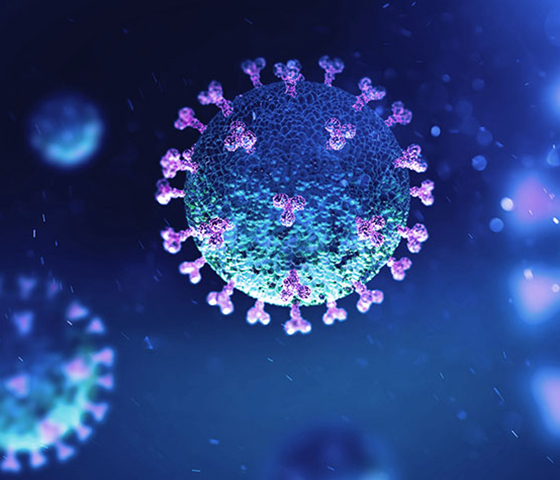The COVID-19 pandemic is persistent to be a major global challenge in epidemiology. It proves to be so with the emergence of newer strain lineages and is more contagious, more virulent, and drug-resistant. In some cases, the newer strains can evade immunity induced by the vaccines.
Here is where the genomic SARS-CoV-2 sequencing becomes vital as it is a rapidly-developing tool in diagnosing COVID-19. The SARS-CoV-2 sequencing can be used to understand how the new coronavirus spreads and how it can be controlled.
The genetic material of an organism or the genome is in essence the instruction manual that contains all the information needed to replicate and maintain it. As for humans, the genomes are made of double-stranded DNAs and are written in special codes of four nucleotide base letters. The human genome is more than 3 billion base letters long. A virus’ genome can either be made of DNA (Deoxyribonucleic Acid) or its close relative RNA (Ribonucleic acid) in contrast to that of the human genome. A virus’ genome is also tiny compared to that of the human genome.
The newly-discovered virus SARS-CoV-2 being under the umbrella of coronaviruses is made up of RNAs. The genomic SARS-CoV-2 sequencing has a single, short RNA strand summing up to just 30,000 letters long. These letters are what can be read one by one in the SARS-CoV-2 sequencing technique.
How Genomic SARS-CoV-2 Sequencing Identifies the Virus
If the new virus is detected through SARS-CoV-2 sequencing in a sample taken usually from the mouth or nose, it will confirm the possibility that an individual’s symptoms are those caused by COVID-19.
Note that genomes of viruses constantly mutate or alter, changing a couple of letters at a time as they replicate and spread by affecting more and more people. These changes in viral RNA can be further studied to track the spread of the virus by SARS-CoV-2 sequencing, recording, and genomic analysis.
If the SARS-CoV-2 sequencing is undertaken promptly and on a large scale, then, it can greatly assist epidemiologists as well as health authorities of governments. SARS-CoV-2 sequencing can aid these entities to gain more understanding of how the virus spreads and evaluate the efficacy of the COVID-19 interventions put in place. The SARS-CoV-2 sequencing can also enable the establishment of truth whether new COVID-19 variants are associated with specific patterns of symptoms or the severity of COVID-19 disease.
Speaking of the longer term, the proper and prompt tracking of new variants is likely to be extremely essential in ensuring that vaccines can be maintained up to date with the strains of the COVID-19 virus that are currently in circulation.
Identifying Local Transmission vs. Imported Cases with SARS-CoV-2 Sequencing
In the initial stages of the pandemic, SARS-CoV-2 sequencing can be used to uncover how many new cases of the COVID-19 disease are imported cases or have come from local transmissions. COVID-19 global databases for SARS-CoV-2 sequencing genomes have enabled researchers to compare and contrast genomes such that a precise assessment of each country’s local transmission has been made.
Pandemic Growth and SARS-CoV-2 sequencing
From the extensive analysis of previous outbreaks, mathematical models can be derived of how the SARS-CoV-2 virus evolved during the epidemic. This allows the growth rate and other parameters of transmission and infection to be calculated from the results of SARS-CoV-2 sequencing. Contrasting estimates from other data sources, the insights from the SARS-CoV-2 sequencing and surveillance can be considered the most useful for the forecast of the longer-term and larger-scale trends. Significantly, the SARS-CoV-2 sequencing provides independent validation of calculations of the COVID-19 pandemic size and growth rate. This is especially useful when cases are underreported and during instances when a lot of people that have been sick with COVID-19 turn out to be asymptomatic.
COVID-19 Transmission in Different Places or Groups and SARS-CoV-2 Sequencing
The widespread sampling and SARS-CoV-2 sequencing of the COVID-19 virus allow the simulation of the spread of the virus in various places or groups of people. SARS-CoV-2 sequencing and surveillance provide valuable information about what drives the spread of the COVID-19 virus and its variants for both local and national outbreaks. This activity can be made more accurate when genomic SARS-CoV-2 sequencing results are combined with data about where, when, and how people travel locally and abroad.
COVID-19 Transmission Chains and SARS-CoV-2 Sequencing
The SARS-CoV-2 sequencing can also recognize unique genetic changes of the COVID-19 virus shared by all those infected in a transmission chain of a single virus. This can be utilized to distinguish whether clusters of cases in the same area have come from and come up from one infection, which one started infection in the others, or if there are several distinct and individual transmission chains with different and earlier roots. The SARS-CoV-2 sequencing can therefore put more to the data provided by patient contact tracing – another yet important tool for tracing outbreaks in localities, hospitals, and other health care settings.
COVID-19 Genetic Variation and SARS-CoV-2 Sequencing
A lot of genetic changes that happen in the genome of the COVID-19 virus will have no substantial effect on the course of infection or disease process or the influence of control measures. But there can still be a few changes that can be important. These parameters need to be identified and tracked over time. For viruses like influenza, it has been established that changes in their genome can alter how the immune system recognizes this virus, its resistance to drugs, and the severe turnout of the disease. These discoveries are slowly being made for the COVID-19 virus with SARS-CoV-2 sequencing.
The fast and larger-scaled genomic SARS-CoV-2 sequencing is a fresh stream of data that can greatly contribute to the tracking of the COVID-19 pandemic and the formulation of appropriate methods of control. The application of SARS-CoV-2 sequencing to the novel COVID-19 virus should only be just the beginning. To date, SARS-CoV-2 sequencing kits have been developed as a scalable solution for larger, laboratory-grade prototypes first developed at the start of the pandemic. These SARS-CoV-2 sequencing kits have proven to be more cost-effective, convenient, and even proving themselves to be a more accurate method for viral sequencing. That is to say, it is suitable surveillance for a rapidly evolving virus to aid more-informed public health decisions.
















